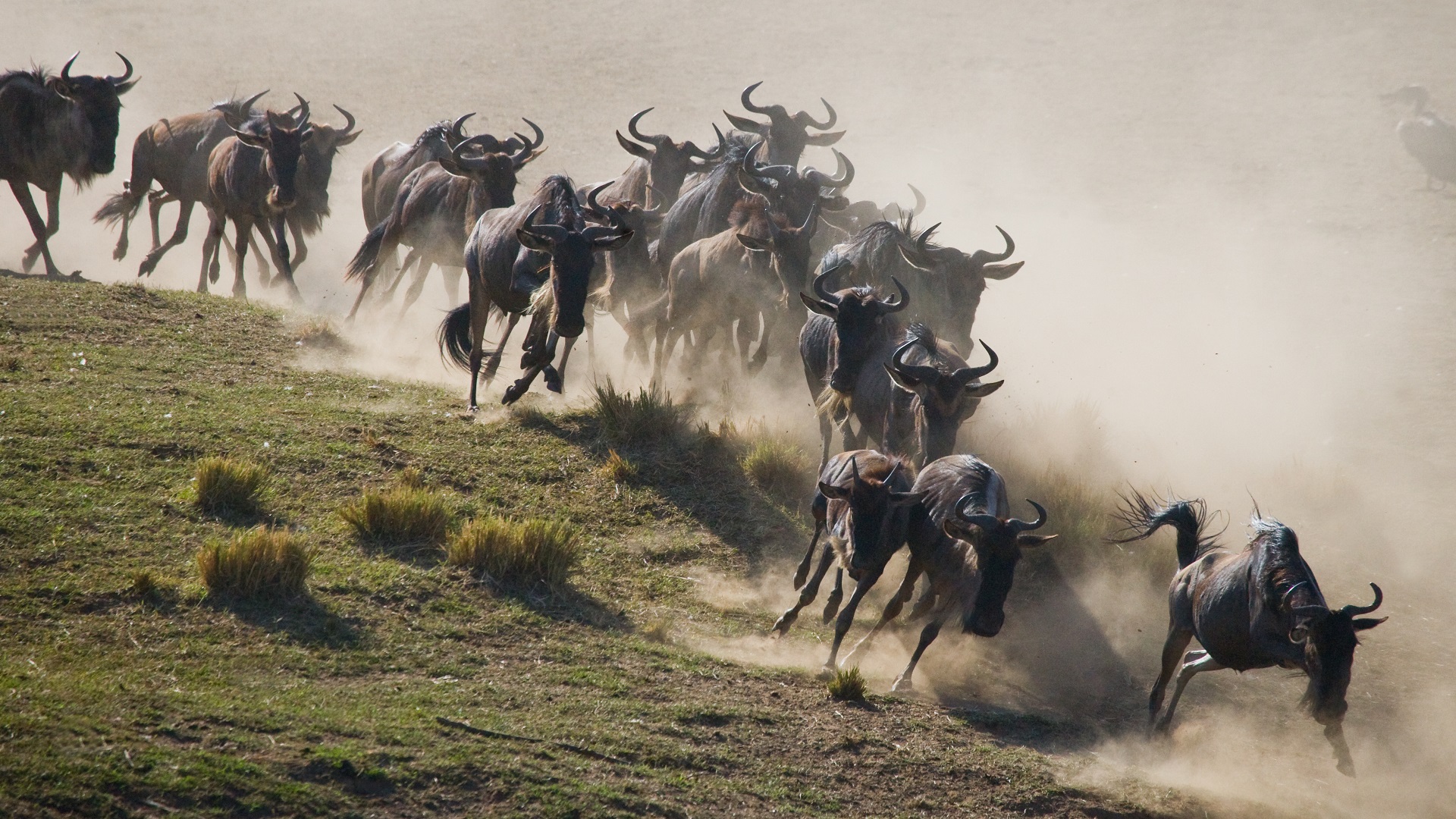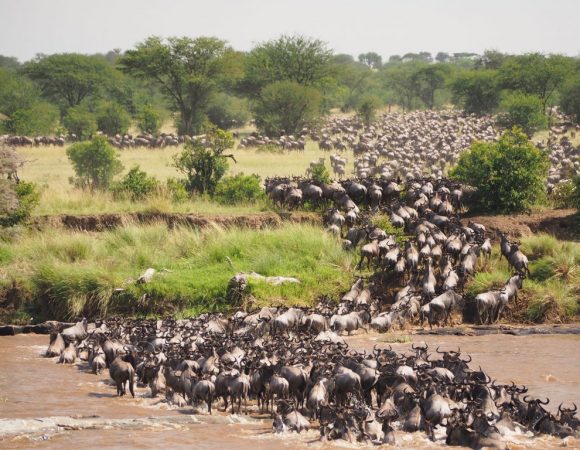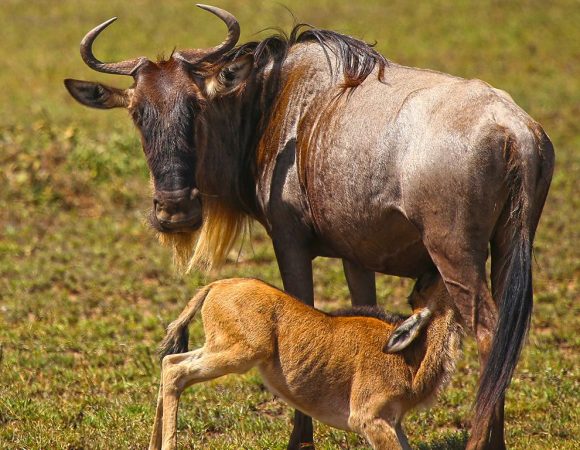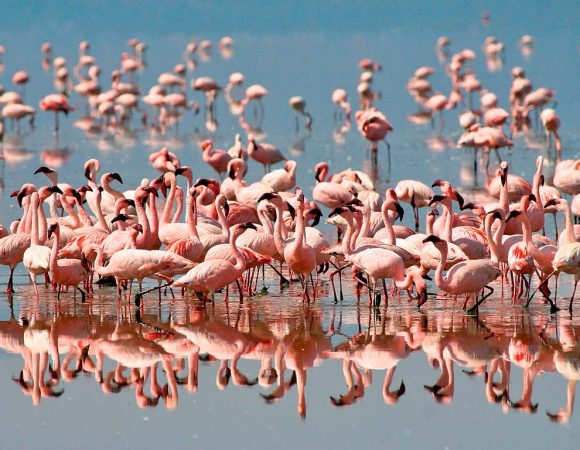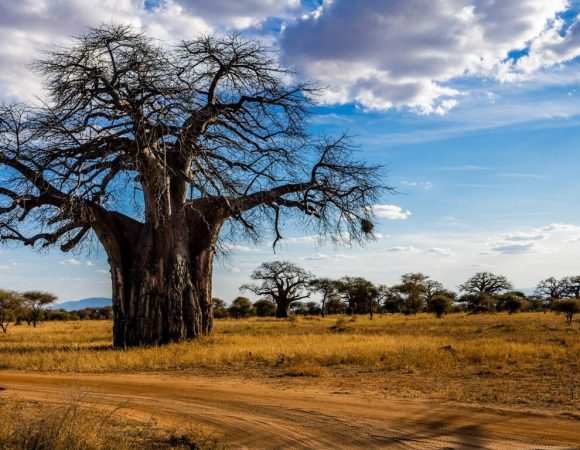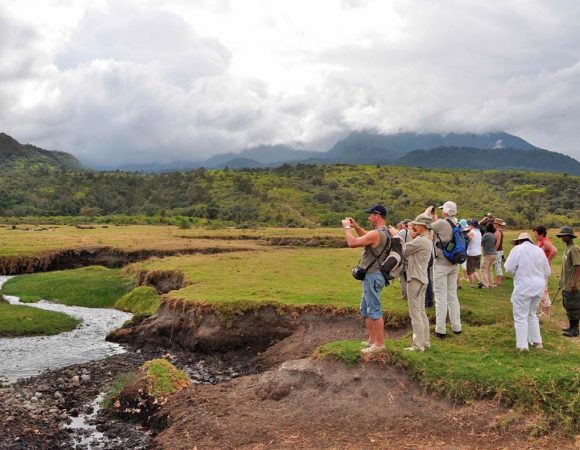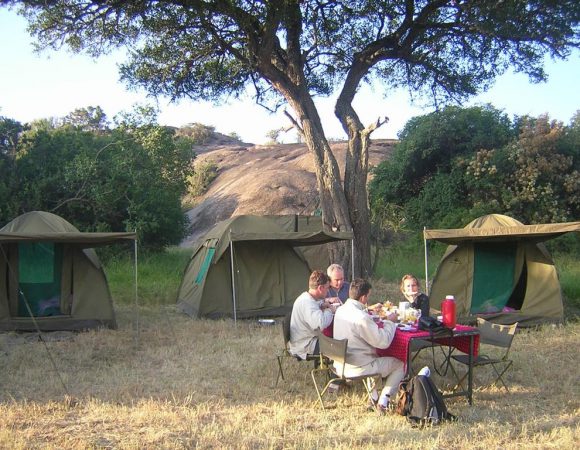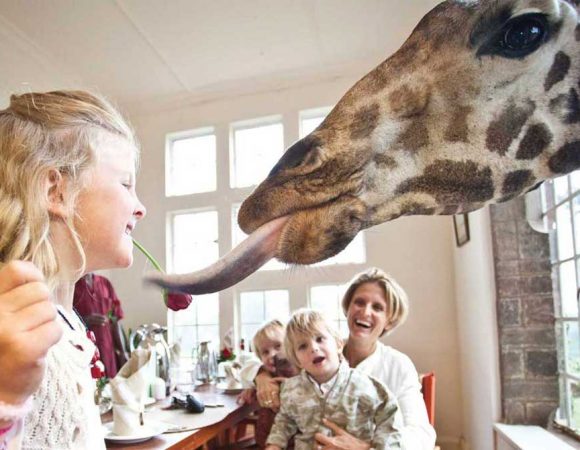- Home
- Great Wildebeest Migration
Great Wildebeest Migration
The great Serengeti wildebeest migration is an annual occassion that occurs between the millions of wildebeest of the Serengeti between the Serengeti National Park in Tanzania and the Masai Mara in Kenya across the Mara river. accompanied by a considerable humongous number of zebra which include few of Grant’s gazelle, Thompson’s gazelle, eland and impala. They migrate in a predictable chronological pattern throughout the year, constantly seeking greener pastures, fresh grazing and fresher water. The perfect occurrence and exact timing of the Serengeti wildebeest migration is entirely dependent upon the rainfall patterns every year.
For more information on the Serengeti migration area and the wildebeest migration, see our migration itineraries below:
January / February / March – The Calving Season
This is the best time to visit the Serengeti for the great wildebeest migration safari. During the period January through March the seemingly unending short grass plains of the southern Serengeti, and the Ngorongoro Conservation Area (not the Ngorongoro Crater), are inhabited by enormous herds of wildebeest and zebra.
Calving happens here in the Serengeti from late January to the middle March when about 80% of the female wildebeest or more give birth to wildebeest calves over a period of a few weeks. The main reason as to why pregnant female wildebeest flock the Ndutu and Salei plains is because they are attracted to the calcium and magnesium rich grass in the Ndutu area which boosts for milk production.for the calves. Approximately 400,000 wildebeest calves are born during this period and this is one of the most wonderful time of year for the wildebeest migration complete with gorgeous green, flat topped acacia tortilis trees. Due to countless herds around the Ndutu area, they attract quite a number of lion, cheetah, leopard and hyena. In the woodland part of the plains, giraffe, elephant and buffalo can be easily spotted.
As things begin to dry up throughout March the herds readily part into bits of herds, scattered on areas with the best grazing conditions as the end of March brings along, long rains.
April / May – Off-Peak Season
This season in Tanzania is ideally rainy in the Serengeti. Regular downpours of long rains are persistent from endof March upto early May . It is referred to as low season therefore wildlife game viewing is minimal and most lodges and mobile safari camps close down.
Roads are less accessible due to the long rains, muddy and overgrown grassland and vegetation. The roads are very slippery due to the situation.
By May more than enough breeding has taken place and the wildebeest are everywhere on the Serengeti plains. The wildebeest migration moves to the West and North, rather to the Western Corridor of the Serengeti bordering Lake Victoria territory, for fresher water though but the don’t all follow the same route as a unit.since parts of the migration group moves to the Western Corridor and Grumeti reserve before embarking on a further north trek, another large group breaks away to migrate to Seronera area in the North
January / February / March – The Calving Season
This is the best time to visit the Serengeti for the great wildebeest migration safari. During the period January through March the seemingly unending short grass plains of the southern Serengeti, and the Ngorongoro Conservation Area (not the Ngorongoro Crater), are inhabited by enormous herds of wildebeest and zebra.
Calving happens here in the Serengeti from late January to the middle March when about 80% of the female wildebeest or more give birth to wildebeest calves over a period of a few weeks. The main reason as to why pregnant female wildebeest flock the Ndutu and Salei plains is because they are attracted to the calcium and magnesium rich grass in the Ndutu area which boosts for milk production.for the calves. Approximately 400,000 wildebeest calves are born during this period and this is one of the most wonderful time of year for the wildebeest migration complete with gorgeous green, flat topped acacia tortilis trees. Due to countless herds around the Ndutu area, they attract quite a number of lion, cheetah, leopard and hyena. In the woodland part of the plains, giraffe, elephant and buffalo can be easily spotted.
As things begin to dry up throughout March the herds readily part into bits of herds, scattered on areas with the best grazing conditions as the end of March brings along, long rains.


